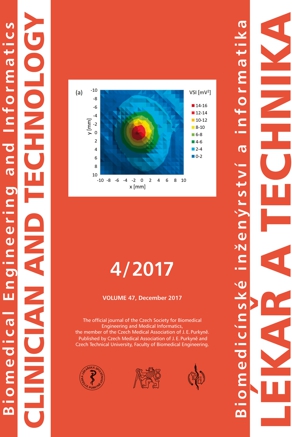Characterization of the bias between oxygen saturation measured by pulse oximetry and calculated by an arterial blood gas analyzer in critically ill neonates
Keywords:
Pulse oximetry, neonatal oxygenation, oxygen saturationAbstract
Continuous monitoring of oxygenation with pulse oximetry is the standard of care for critically ill neonates. A better understanding of its measurement bias compared to arterial oxygen saturation could be helpful both for the clinician and researcher. Towards that end, we examined the electronic database from a large neonatal ICU. From a 24-month period we identified 23,032 paired SpO2-SaO2 measurements from 1,007 infants who were receiving supplemental oxygen during mechanical ventilation. We found that SpO2 was consistently higher than SaO2. The size of the bias was fairly constant when SpO2 was between 75-93%, above which it dropped steadily. The median size of this bias was 1% SpO2 during hyperoxemia (SpO2 97-100%) with a median variation of 1.3% above and below. During periods of hypoxemia (SpO2 75-85%) and normoxemia (SpO2 89-93%) the bias was approximately 5% SpO2, with a median variation of 5% above and below.Downloads
Published
Issue
Section
License
Copyright (c) 2018 Thomas Edward Bachman

This work is licensed under a Creative Commons Attribution 4.0 International License.
Authors who publish with this journal agree to the following terms:
- Authors retain copyright and grant the journal right of the first publication with the work simultaneously licensed under a Creative Commons Attribution License (https://creativecommons.org/licenses/by/4.0/) that allows others to share the work with an acknowledgment of the work's authorship and initial publication in CTJ.
- Authors are able to enter into separate, additional contractual arrangements for the non-exclusive distribution of the journal’s published version of the work (e.g., post it to an institutional repository or publish it in a book), with an acknowledgment of its initial publication in this journal.
- Authors are permitted and encouraged to post their work online (e.g., in institutional repositories or on their website or ResearchGate) prior to and during the submission process, as it can lead to productive exchanges.
CTJ requires that all of the content of the manuscript has been created by its respective authors or that permission to use a copyrighted material has been obtained by the authors before submitting the manuscript to CTJ. CTJ requires that authors have not used any copyrighted material illegally, as for example a picture from another journal or book, a photo, etc. It is the author’s responsibility to use only materials not violating the copyright law. When in doubt, CTJ may ask the authors to supply the pertinent permission or agreement about the use of a copyrighted material.
The opinions expressed in CTJ articles are those of authors and do not necessarily reflect the views of the publishers or the Czech Society for Biomedical Engineering and Medical Informatics.


